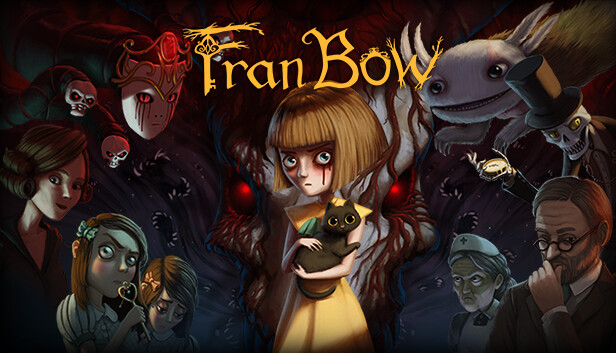Digital Storytelling
Effective Story
- Multimedia elements
- Links to past exp. of audience
- Message Deeply crafted into audiences mind
Digital Story
- IT elements
- Enhance user exp.
- Doesn’t improve story content
Interactive Story
- Story backbone is built but have multiple endings
- Users get to chip in to alter the story path
7 Elements of Effective Story (P.P.P.E.V.E.D)
- Point of view (POV) – Message to be delivered
- Emotional Content – Happy / Sad
- Voice – Tone: Conversational / Narrative
- Power of Soundtrack/music – Enhance emotion
- Economy – KISS (Keep it short simple)
- Pacing – Rhythm of the story
- Dramatic Questions – Tension of Conflicts, Plot
4 Types of Conflicts (P.S.N.S)
-
Person vs Person (Protagonist vs Antagonist)
-
Antagonist stop the protagonist from achieving goal
-
Person vs Society / Establishment
-
Protagonist against the norm of our common understanding
-
Person vs Nature
-
Protagonist try to survive in native challenges (e.g. man vs wild)
-
Person vs Self
-
Focus on internal conflicts within the protagonist
-
Changes within the protagonist happen (e.g. Black swan)
5 Types of Characters
- Protagonist
- Centre of the story
- Can be good or bad person
- Could be person/animal/thing
- Described with personal qualities
- Antagonist
- Someone/Something goes against the protagonist
- Prevent protagonist from achieving goal
- Not necessary a bad guy
- Stock Character
- Stereotypical character shaped by common perception
- Anti-hero
- A type of protagonist but does not possess noble-quality
- Symbolic Character
- Existence represent some major idea or an aspect of society
- Can be any major/minor chars
4 Types of Stories
- Character Story – Story about someone
- Why is he/she so importantto you?
- What is your relationship to the protagonist?
- Anyevents worth to mention?
- Any lesson learnt from this character?
- What would you say to the characterif you’re got a chance?
- Any memories worth to treasure?
- Adventure Story – Life changing process
- What makes you leave your comfort zone?
- What so attractive in the new perspective?
- What have you changed?
- What lesson you have learnt?
- Accomplishment Story – desire -> struggle -> realisation -> achieving goal
- What was the event?
- What was your relationship to the event?
- With whom did you experiencethis event?
- Was there a defining moment in the event?
- Any Lesson Learnt?
- How this event changes your life?
- Story about my place – Place you known well and was special to you
- How would you describethis place?
- With whom did you share this place?
- Any Special events?
- How this place been changed?
5 Themes of Story
- Monster in the House – supernatural monster in a closed space
- Monster x 1/more
- House x 1
- Victims x 1/more
- Sin manifested in Monster arrival x 1
- Monster appears…run
- Victims got killed or injured… run
- Realization of sin… run
- Final battle
- Golden Fleece – quest myth
- Quest x 1
- Prize x 1
- Road x 1
- Incidents x many
- Character x 1
- Giving a quest to the protagonist awarded with an irresistible price
- Creates incidents that help the protagonist grow(internally)
- Protagonist become different when achieve the goal
- Out of Bottle – magic isn’t everything
- Wish x 1
- Incidents x many
- Reflection (good moral) x 1
- The protagonist has an unrealistic wish
- Wish come true all of sudden
- Incidents happening after wish comes true
- Self-reflection – normal is good
- Rites of Passage – slow realization on the problem
- Life problem x 1
- Wrong ways of handling the problem
- Realization
- Hero is facing a life problem that cannot escape from
- Hero denies the problem and attempt to handle problems in wrong ways
- Situation worsens
- Accept fault in order to overcome the problems
- Whydunnit – dark side, human nature
- Detective x 1
- Secret x 1
- Dark turn x 1
- Problem appears, protagonist traces the problem
- Discovers out that something secret is happening out there
- Attempts to deal with people behind the secret
7 Stages of Freytag’s Pyramid
- Exposition - Setting : Time/Place/PPL
- Inciting Moment - The moment where story begins
- Rising Action - Incidents to increase the tension, conflicts between protagonist, antagonist
- Climax - Turning Point
- Falling Action - Incidents preparing for the final battle
- Resolution - Head to head battle, reveal the final result
- Denoument / Concluding - Tying untied strings, describe where will characters go or end up
Story Design
-
First-Person POV – narrator is the protagonist
-
Pros: Enable audience to see, think and feel what the char is experiencing.
-
Cons: No full picture, quite subjective.
-
Second-Person POV – makes the audience you a character in the story
-
Pros: Reader has control over what happens, multiple endings
-
Cons: difficult to write
-
Third-Person POV – narrator is outside the story
-
Pros: know more than 1 char is feeling, writer has more freedom
-
Cons: less intimacy for reader, cannot feel the char, risk of confusion
Interactive Story
- Story backbone is built but endings could be different
- Some story has ne ending, but user experienced could be different.
Story Develop Strategies (Interactive Story)
3 Strategies that FAIL to develop an interactive story:
- Branching – too much effort, too less meat
- Foldback – bad exp. for player, feeling cheated
- Environmental Strategy-Attempt (more props, agents, mini-games)
Story Design – Setting
-
Real Setting
-
Pros: save effort from explaining story setting
-
Cons: less creative, too local
-
Virtual Setting
-
Pros: Fresh to audience
-
Cons: Author have to pay effort to explain setting
Character Design
Process to Character Design
- Research
- Design theory
- Sketching
- Refinement
- Creature Creation
- Handle legal matters
Starter Character Qualities
- Type of being or creature
- Scale of Size
- Costume
- Props
- Emotion
- Surface texture
- Colour
- Locomotion capability and mode
- Gender issue
- Style issue
Scenario Control vs Interactivity
Abstraction
Introduce laws to confine the available options to players
Control Plot vs Interactive Plot
- Control Plot – Fixed sequence
- Interactive Plot – replace control plot with a web of possibilities
Thinking
Data-Intensive vs Process-Intensive
- Data-Intensive – Control Plot
- Process-Intensive – Interactive Plot
Noun Thinking vs Verb Thinking
- Noun Thinking – specify things, about existence
- Verb Thinking – Describe events, about action
4 Basic Requirements of Personality Model
- Behavioral Completeness – must address all possible character behavior
- Conciseness – keep the personality model as little as possible
- Orthogonality – personality traits must not overlap each other
- Tied to behavior – must be created towards the behavior
5 Types of Personality Traits
- Intrinsic – Basic personality (greed, integrity, pride, virtue)
- Mood – Emotional States (angry, joy)
- Volatility – the rate of change of mood
- Relationship – relationships between actors
- Accordance Variable – Gullibility - Suspicious

